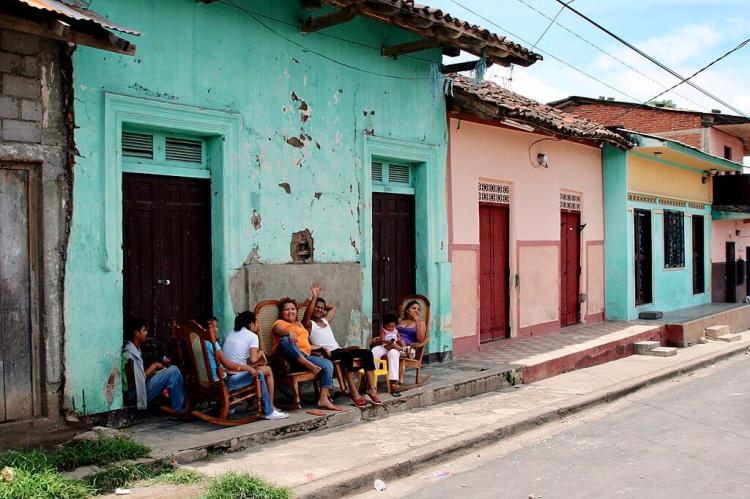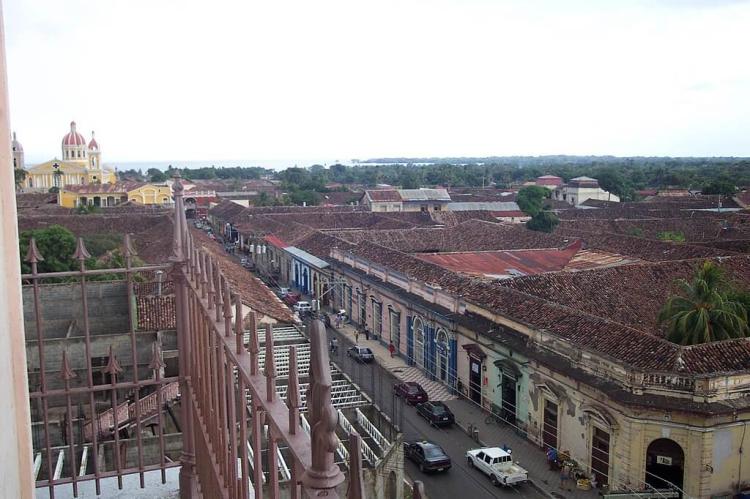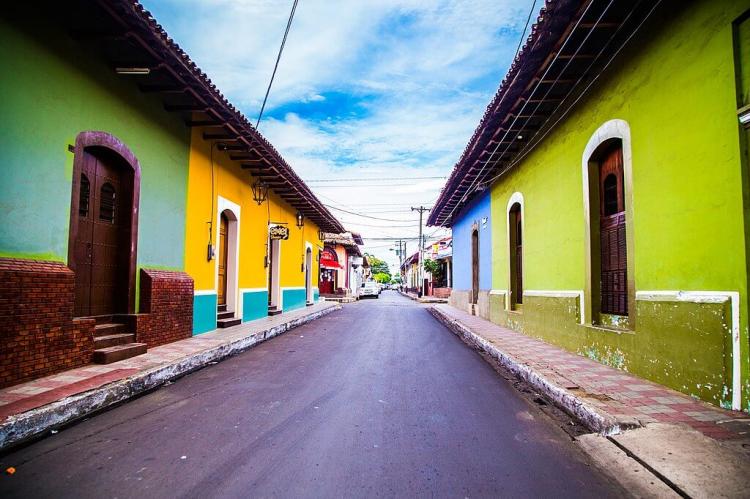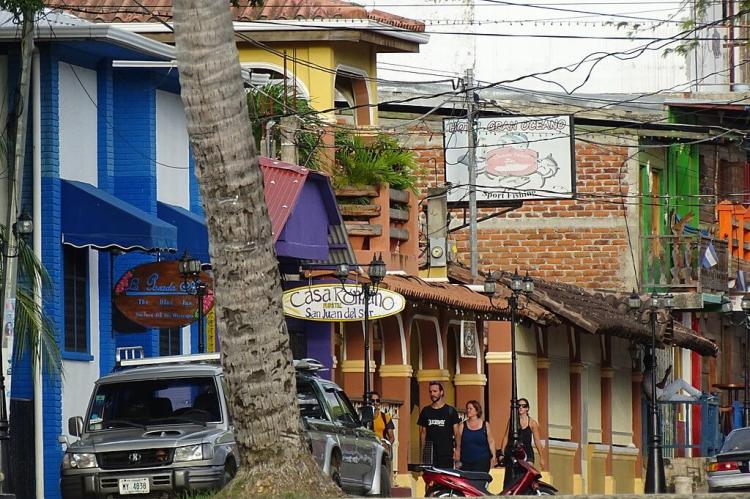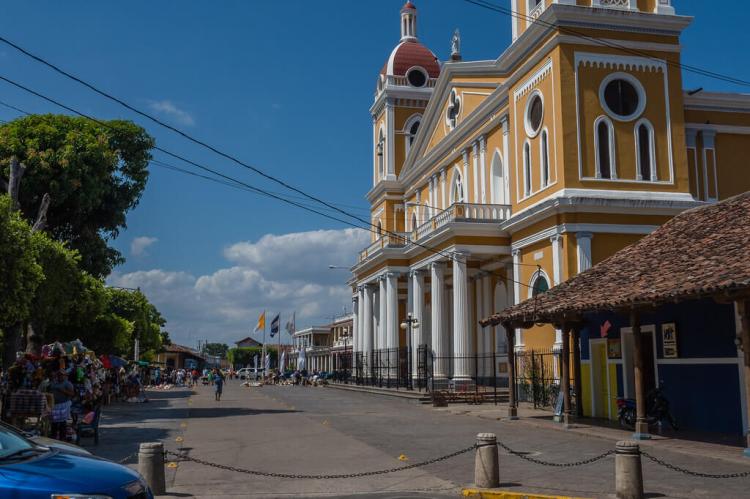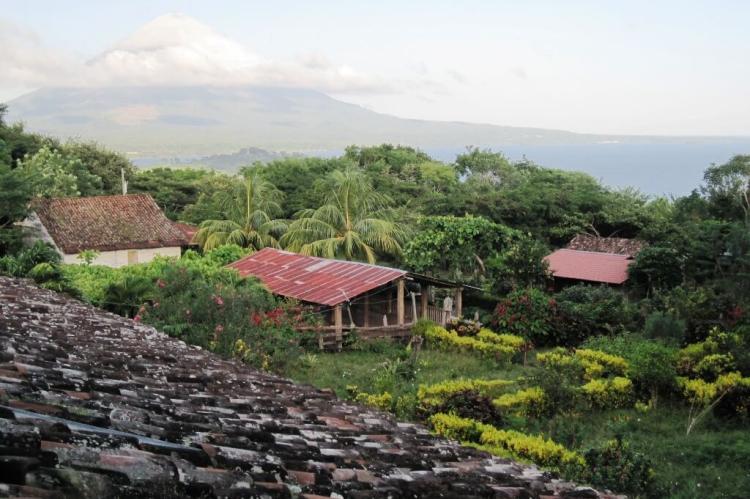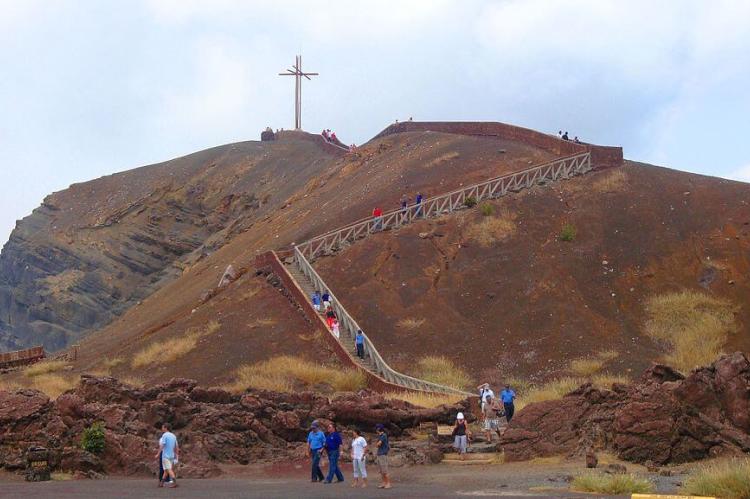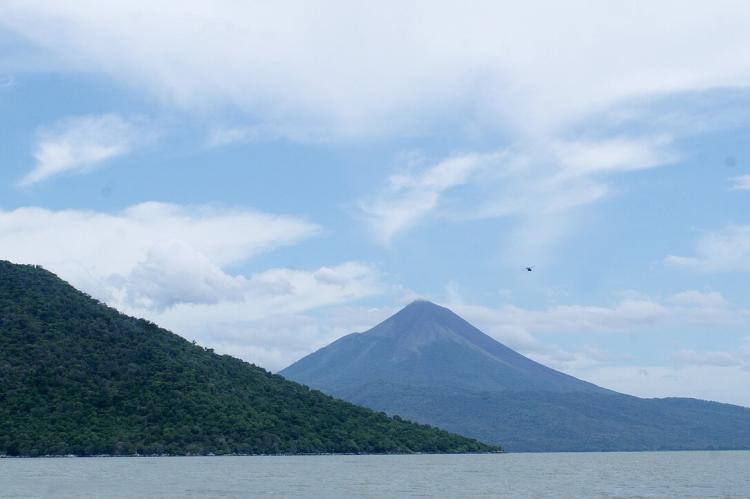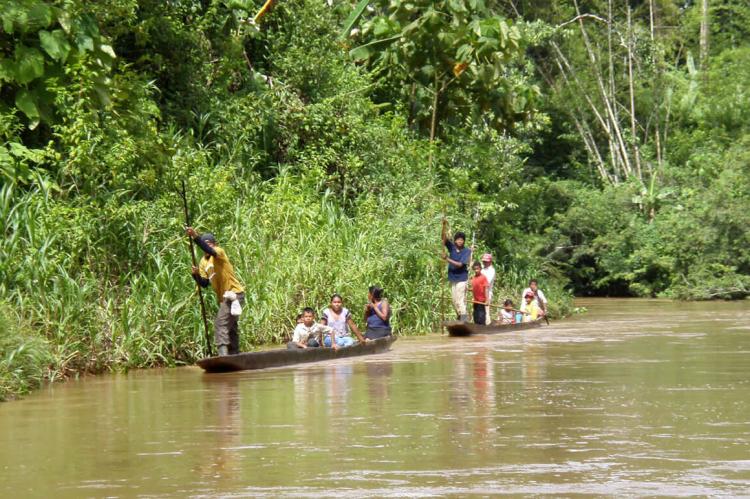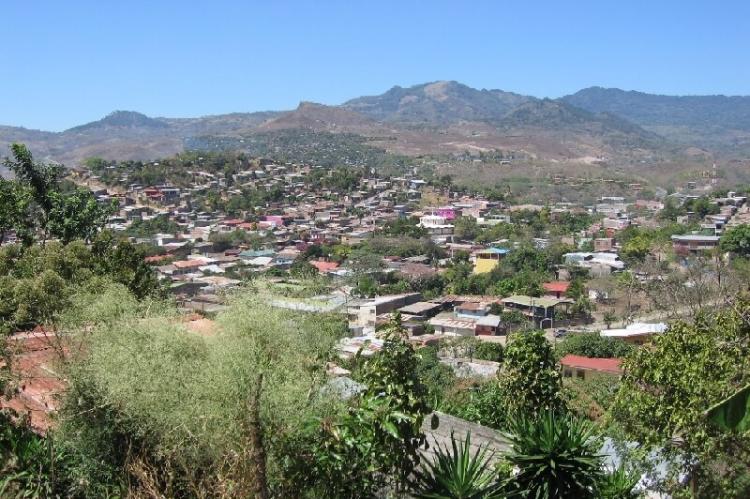Nicaragua: Cultural Landscape
Nicaragua's cultural landscape is a vibrant mosaic shaped by centuries of Indigenous, Spanish, and African influences. This unique blend is reflected in the nation's traditions, cuisine, arts, music, and festivities, offering a glimpse into the country's rich and evolving cultural heritage.
The Cultural Landscape of Nicaragua
A Fusion of Traditions and Contemporary Influences
Nicaragua's cultural landscape is a vibrant mosaic shaped by centuries of Indigenous, Spanish, and African influences. This unique blend is reflected in the nation's traditions, cuisine, arts, music, and festivities, offering a glimpse into the country's rich and evolving cultural heritage. Despite challenges posed by political Instability, economic hardship, and globalization, Nicaragua remains a land where cultural identity continues to thrive and adapt.
Indigenous Heritage
The Indigenous peoples of Nicaragua, including the Miskito, Sumo, Rama, and Garifuna, have played a fundamental role in shaping the country's cultural diversity. These communities preserve their languages, spiritual beliefs, and ancestral traditions, such as weaving, pottery, and traditional medicinal practices. The Miskito and Rama people live predominantly on the Caribbean coast, maintaining fishing and agricultural practices passed down through generations.
The Garifuna community, with roots in African and Indigenous heritage roots, has significantly contributed to Nicaragua's cultural vibrancy, mainly through music, dance, and cuisine. Garifuna music, characterized by drumming and rhythmic chants, is often featured in celebrations and religious ceremonies, keeping its cultural identity alive amid modern influences.
Spanish Colonial Influence
The Spanish colonization of Nicaragua in the 16th century introduced profound changes that continue to shape the country's identity today. The Spanish influence is most visible in the widespread use of the Spanish language, Roman Catholicism, and the architectural style that dominates the older cities.
The colonial cities of Granada and León are prime examples of this heritage, with their well-preserved colonial buildings, plazas, and cathedrals. In Granada, colorful colonial-era houses and the iconic Iglesia de la Merced draw visitors into a world that reflects the elegance of Spanish influence. Meanwhile, León's Basilica de la Asunción and the cultural and political history embedded in the city showcase Nicaragua's colonial past and its role in the nation's revolutionary movements.
Folklore, Traditions, and Celebrations
Nicaraguan culture is rich with folklore, legends, and traditional performances woven into daily life's fabric. Many of these expressions are a fusion of Indigenous beliefs and Spanish Catholic traditions. One of Nicaragua's most famous folkloric performances is El Güegüense, a satirical play that combines drama and dance to critique colonial rule and social hierarchies. Recognized by UNESCO as a Masterpiece of the Oral and Intangible Heritage of Humanity, El Güegüense represents the enduring spirit of Nicaraguan cultural resistance.
Another iconic Nicaraguan tradition is La Gigantona, a celebration featuring a towering female puppet that parades through the streets during religious and cultural festivals. This performance, often accompanied by drummers and young performers, reflects a blend of Indigenous and Spanish influences and symbolizes Nicaraguan pride.
Religious festivals, such as Semana Santa (Holy Week) and La Purísima, are also integral to Nicaraguan life. During these events, religious devotion is expressed through processions, fireworks, music, and intricate street decorations. La Gritería, held in honor of the Virgin Mary, is a uniquely Nicaraguan tradition that fills the streets with joyful songs and celebrations, highlighting the deep connection between religious faith and cultural identity.
Cuisine: A Blend of Flavors
Nicaraguan cuisine is a delicious fusion of Indigenous, Spanish, and Afro-Caribbean influences. Gallo pinto, a dish made from rice and beans, is a staple of Nicaraguan households and is often served with eggs, plantains, or cheese. Other popular dishes include vigorón (boiled yuca topped with pork rinds and cabbage salad), nacatamales (corn dough stuffed with pork, rice, and vegetables wrapped in banana leaves), and a variety of seafood dishes, particularly along the Caribbean coast.
Corn is central to Nicaraguan gastronomy and is used in dishes such as indio viejo (a savory corn-based stew) and rosquillas (traditional cornmeal cookies). The country's diverse culinary traditions reflect the agricultural roots of its Indigenous communities and the influence of the Afro-Caribbean population, especially in the use of coconut, seafood, and tropical fruits in coastal cuisine.
Music and Dance
Music and dance are integral to Nicaraguan culture, embodying the country's rich historical and social narratives. Traditional music genres such as son nica and marimba are still widely performed at festivals, religious celebrations, and social gatherings. The marimba, a wooden percussion instrument, is at the heart of Nicaraguan folk music, particularly in the Pacific region, where it accompanies vibrant dances like polka and mazurka.
On the Caribbean coast, the Afro-Caribbean influence is strong, with the energetic rhythms of Palo de Mayo, a traditional dance celebrating fertility and the arrival of spring. This dance, with its pulsating drums and colorful costumes, encapsulates the diversity of Nicaragua's cultural expressions, where African, Indigenous, and European traditions come together in joyful celebration.
Literature and Visual Arts
Nicaragua has produced some of Latin America's most celebrated literary figures, notably Rubén Darío, a poet who revolutionized Spanish-language literature with his modernist works. Darío's influence extends beyond literature, shaping Nicaraguan identity and cultural thought. His legacy is celebrated yearly at the International Poetry Festival in Granada, which draws poets and artists from across the globe.
In addition to its literary heritage, Nicaragua boasts a thriving visual arts scene. Painters, sculptors, and ceramic artists draw inspiration from the country's natural landscapes and cultural heritage. Indigenous motifs and colonial themes are often depicted in Nicaraguan art, reflecting the ongoing dialogue between tradition and modernity. Artisans in towns like San Juan de Oriente are renowned for their pottery, particularly their intricate black ceramics and colorful handcrafted pieces that blend ancient techniques with contemporary designs.
Contemporary Influences on Nicaraguan Culture
In recent years, modern forces such as globalization, technology, and migration have increasingly shaped Nicaragua's culture. While these influences bring opportunities and challenges, they transform how Nicaraguans interact with their cultural heritage.
- Globalization has brought new ideas, products, and cultural practices into Nicaragua, fusing traditional customs with modern lifestyles. This influence can be seen in everything from fashion to music, where younger generations embrace international trends while maintaining a connection to their roots.
- Technology has revolutionized how Nicaraguans communicate and access information. Social media platforms are now central to cultural exchanges, enabling Nicaraguans to share their traditions with the world while being exposed to global cultures. While this has led to concerns about the erosion of traditional values, technology offers new cultural preservation and innovation opportunities.
- Migration has had a profound impact on Nicaraguan culture. The large diaspora, particularly in the United States, has spread Nicaraguan traditions abroad while bringing new cultural influences back home. Remittances from Nicaraguans living abroad play a significant role in the economy, but migration also creates a cultural exchange that reshapes both the local and expatriate Nicaraguan communities.
Challenges Facing Nicaraguan Culture
Nicaragua's cultural heritage faces several challenges, both internal and external, that threaten its preservation and development.
- Political Instability has been a recurring issue, particularly after the 2018 protests against President Daniel Ortega's government. The resulting crackdown on civil liberties has strained the cultural sector, with artists, intellectuals, and cultural institutions facing censorship and restrictions.
- Economic hardship is another significant challenge. As one of the poorest countries in Central America, Nicaragua's economic struggles limit many citizens' access to education, arts, and cultural activities. The focus on survival often leaves little room for cultural expression and preservation.
- Globalization continues to pressure traditional Nicaraguan customs, particularly among younger generations, which are increasingly influenced by Western culture. While this can lead to the loss of traditional practices, it also allows Nicaraguan culture to evolve and adapt in a globalized world.
- Climate Change poses a long-term threat to Nicaragua's cultural and natural heritage. Rising sea levels and changing weather patterns directly impact coastal communities while shifting environmental conditions threaten the country's agricultural traditions.
Conclusion
Nicaragua's cultural landscape is a dynamic blend of Indigenous, Spanish, and African influences that have shaped the nation's identity over centuries. Despite the challenges posed by political Instability, economic hardship, and globalization, Nicaragua's rich music, dance, literature, and visual arts traditions continue to flourish. Nicaraguan culture's resilience, embodied in its festivals, cuisine, and creative expressions, reflects its people's enduring spirit and ability to adapt and thrive in adversity.
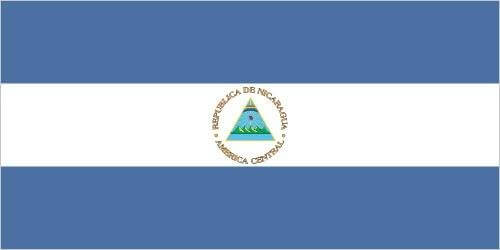
The official flag of Nicaragua.
Cultural Geography of Nicaragua
Largest Cities / Metro Areas
Ranked by population estimate (2022):
Managua (1,047,000 / 1,401,000): Managua is the capital and largest city of Nicaragua, with a population of over 1 million people. It is located on the shores of Lake Managua, in the country's center. Managua was founded in 1819, and it became the capital of Nicaragua in 1852. The city has a long history of political and economic Instability, and several earthquakes have damaged it. However, Managua is also a vibrant and growing city with a rich culture and various visitor attractions.
León (175,000 / 205,000): León is the second largest city in Nicaragua and is located in the western part of the country, about 90 km (56 mi) from Managua. León was founded in 1524 by the Spanish, and it was the capital of Nicaragua until 1852. The city is known for its colonial architecture, including the León Cathedral, one of Central America's largest cathedrals.
Tipitapa (144,000 / 157,000): Tipitapa is a city and municipality in the Managua department of western Nicaragua, located between Lake Managua and Lake Nicaragua. Tipitapa was founded in 1753 by the Spanish and eventually became a major center for trade and agriculture. Today, the city is a major industrial and agricultural center and a popular destination for tourists who come to enjoy the city's beaches, resorts, and casinos. The city also has several historical landmarks, including the Tipitapa Cathedral, the Tipitapa Museum, and the Tipitapa Fortress.
Masaya (136,000 / 147,000): Masaya is a city in southwestern Nicaragua, just east of Lake Masaya. It is the capital of the Masaya Department and a popular tourist destination known for its colonial architecture, lively markets, and proximity to several active volcanoes.
Ciudad Sandino (124,000 / 141,000): Ciudad Sandino is a city and municipality in the Managua Department of Nicaragua. Ciudad Sandino is located just outside of Managua. It was founded in 1969 after a series of floods forced residents to relocate from the nearby town of Acahualinca. The city is a major industrial and commercial center, home to several factories, warehouses, and businesses. Ciudad Sandino is also a popular residential area, home to many schools, hospitals, and parks.
Chinandega (114,000 / 128,000): Chinandega is a city and municipality in the Chinandega Department of Nicaragua. It is located in the country's northwestern part, about 130 km (81 mi) northwest of Managua. Chinandega is a major commercial and agricultural center known for producing coffee, sugar, and cotton. It is also a popular tourist destination for its beaches, volcanoes, and colonial architecture.
Matagalpa (111,000 / 123,000): Matagalpa is a city in northwestern Nicaragua, located in the Matagalpa Department. It is known for its coffee production, flowers, cattle, and dairy products. The city is also a popular tourist destination, known for its colonial architecture, natural beauty, and vibrant culture.
Estelí (110,000 / 121,000): Estelí is a city in northwestern Nicaragua, located in the Estelí Department. Estelí is known for its tobacco, coffee, flowers, and cattle production. The city is also a popular tourist destination, known for its colonial architecture, natural beauty, and vibrant culture.
Granada (105,000 / 114,000): Granada is a city in western Nicaragua, located on the shores of Lake Nicaragua. It is the capital of the Granada Department and a popular tourist destination known for its colonial architecture, lively markets, and proximity to several active volcanoes.
Jinotega (53,000 / 150,000): Jinotega is the capital of the Jinotega Department in north-central Nicaragua. It is located in a valley surrounded by mountains and is known for its cool climate and coffee, tobacco, and corn production. The city is also a popular tourist destination, known for its natural beauty, including the Selva Negra Cloud Forest Reserve and its colonial architecture. The metro area of Jinotega includes the surrounding municipalities of El Cuá, Jinotega, and San Rafael del Norte.
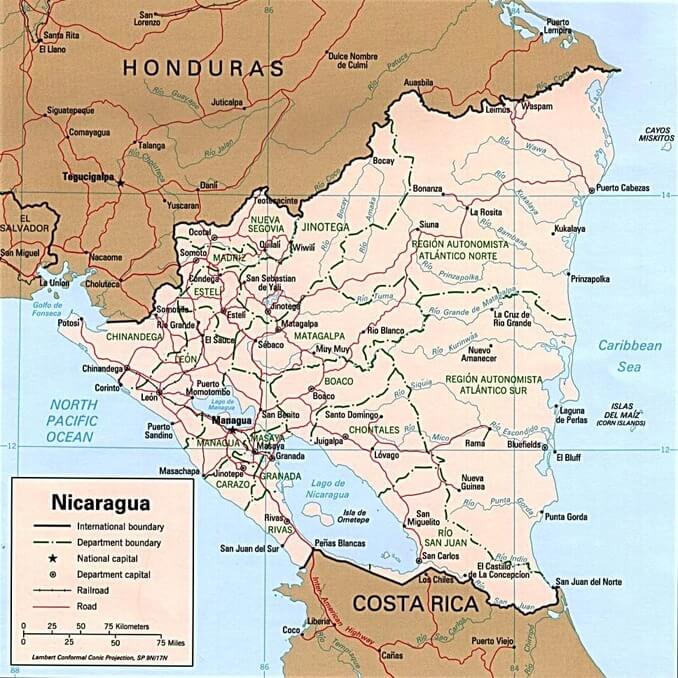
Political map of Nicaragua.
Administrative Divisions
Nicaragua is divided into 15 departments and two self-governing regions (autonomous communities) for administrative purposes, each with its capital city. The departments are further subdivided into 153 municipalities. The departments and autonomous regions of Nicaragua, their capitals, and a brief description are as follows:
Departments
Boaco (Capital: Boaco): Boaco is a department known for its agricultural activities, including coffee and cattle farming. The department combines rural landscapes, small towns, and traditional Nicaraguan culture.
Carazo (Capital: Jinotepe): The department of Carazo is located in the Pacific region and features a mix of rural and urban areas. It is known for its fertile plains, agricultural production, and artisanal crafts.
Chinandega (Capital: Chinandega): The department of Chinandega is characterized by its diverse landscapes, including volcanoes, beaches, and agricultural fields. It is an important agricultural hub that produces sugar, peanuts, and sorghum.
Chontales (Capital: Juigalpa): The department of Chontales is known for its agricultural activities, particularly rice and beans cultivation. It offers a glimpse into rural Nicaraguan life, with small villages and picturesque countryside.
Estelí (Capital: Estelí): Estelí, situated in the northern highlands, is known for its tobacco production and craftsmanship. The department is home to artisans creating pottery, cigars, and textiles.
Granada (Capital: Granada): Granada is a historically significant department with a colonial city of the same name. The department features Lake Nicaragua, the Mombacho Volcano, and a rich cultural heritage.
Jinotega (Capital: Jinotega): Jinotega is recognized for its coffee production, scenic landscapes, and ecotourism potential. The department offers stunning mountain views, waterfalls, and hiking opportunities.
León (Capital: León): León, one of Nicaragua's oldest cities, is a vibrant department with a solid cultural and historical legacy. It features colonial architecture, universities, and cultural events.
Madriz (Capital: Somoto): Madriz is characterized by its rural charm and agricultural activities. The department is known for its traditional lifestyle, handicrafts, and unspoiled landscapes.
Managua (Capital: Managua): Managua is the capital department housing the country's capital city, Managua. The department encompasses the political, economic, and cultural center of Nicaragua.
Masaya (Capital: Masaya): This department is rich in Indigenous culture and artisanal crafts. It features the active Masaya Volcano and the famous Masaya Market for handmade goods.
Matagalpa (Capital: Matagalpa): Matagalpa is renowned for its coffee plantations, misty mountains, and lush forests. The department offers a cool climate and opportunities for ecotourism and coffee-related experiences.
Nueva Segovia (Capital: Ocotal): Nueva Segovia is in the north and features agricultural activities and urban centers. The department is known for its unique landscapes and traditional practices.
Rivas (Capital: Rivas): Rivas is located along the Pacific coast and is known for its beach towns, surf spots, and fishing villages. The department offers coastal beauty and opportunities for water-based activities.
Río San Juan (Capital: San Carlos): The department of Río San Juan is defined by its eponymous river and stunning natural surroundings. It is a gateway to the freshwater Lake Nicaragua and features ecotourism opportunities.
Autonomous Regions
Autonomous Region of the North Caribbean Coast (RACCN): RACCN is located on the Caribbean coast and is home to diverse Indigenous and Afro-descendant communities. The region features coastal beauty, traditional cultures, and unique languages. Its capital is Puerto Cabezas (Bilwi).
Autonomous Region of the South Caribbean Coast (RACCS): RACCS is known for its vibrant Afro-descendant culture and stunning Caribbean landscapes. The region offers coastal beauty, cultural richness, and distinct traditions. Its capital is Bluefields.
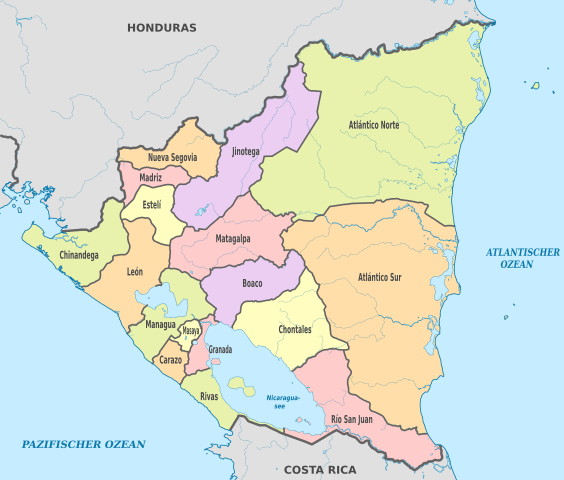
Map depicting the administrative divisions of Nicaragua.
Geographic Regions (Zones)
The physical geography of Nicaragua divides the country into three major zones:
- Pacific Lowlands: In the west, the Pacific lowlands extend inland approximately 75 km (46 mi) from the coast. It is a region of lakes and is densely populated.
- North-Central Highlands: North and east of the Pacific lowlands are a triangular area of rugged mountain ridges approximately 900 - 1800 m (3,000 - 6,000 ft) in elevation, alternating with deep valleys. The western slopes are relatively dry, while the eastern slopes are covered in rainforests.
- Caribbean Lowlands: The eastern Caribbean lowland plains occupy more than half of the country and are among the widest in Central America, averaging 100 km (60 mi) in width.
Historical, Cultural, and Natural Landmarks
Nicaragua has a rich tapestry of historical, cultural, and natural landmarks. Here are some notable examples, separated by region:
Pacific Lowlands
The Pacific Lowlands region of Nicaragua is known for its stunning natural landscapes, vibrant cities, and historical landmarks. Here are some of the main attractions, landmarks, and protected areas in the region:
Masaya Volcano National Park: Located near the city of Masaya, this national park is home to the active Masaya Volcano. Visitors can hike up to the crater's edge and witness the volcanic activity, including lava lakes and gas plumes.
Granada: This historic city is one of Nicaragua's leading tourist destinations. It features well-preserved colonial architecture, colorful buildings, and cobblestone streets. Visitors can explore the city's landmarks, including the Cathedral of Granada and the Convent of San Francisco.
León Cathedral: Officially known as the Cathedral of the Assumption of Mary, it is a historic and architectural landmark in León, Nicaragua. As the largest cathedral in Central America, it is a testament to the region's rich cultural and religious history.
Mombacho Volcano Nature Reserve: Situated near Granada, Mombacho Volcano is a dormant stratovolcano that offers nature trails, cloud forests, and panoramic views of Lake Nicaragua and Granada. The reserve is known for its biodiversity, including orchids and howler monkeys.
San Juan del Sur: A popular beach town on the Pacific coast, San Juan del Sur is known for its stunning sandy beaches, surfing spots, and lively nightlife. It attracts tourists and surf enthusiasts looking for relaxation and adventure.
Montelimar Beach: Located on the southwestern coast, Montelimar Beach offers a long stretch of sandy shoreline, warm waters, and beachfront resorts. It is a popular destination for sunbathing, swimming, and water sports.
Juan Venado Island Nature Reserve: This protected area is near León and encompasses a long, narrow island and mangrove forest. It is a haven for birdwatching and an important nesting site for sea turtles.
La Boquita and Casares Beaches: These neighboring beaches, located near Diriamba, offer serene coastal landscapes, calm waters, and opportunities for swimming, sunbathing, and enjoying fresh seafood.
Ometepe Island: Situated in Lake Nicaragua, Ometepe Island is formed by two volcanic peaks, Concepción and Maderas. The island offers hiking trails, lush forests, and opportunities for wildlife spotting. Visitors can also explore pre-Columbian petroglyphs and enjoy the island's unique cultural heritage.
La Flor Wildlife Refuge: Located on the southern Pacific coast, this protected area is a nesting site for olive ridley sea turtles. Visitors can witness the mass arrivals of turtles during the nesting season and participate in turtle conservation activities.
Chocoyero-El Brujo Natural Reserve: Situated near the capital city of Managua, this reserve features a cloud forest and waterfalls. It is known for its population of chocoyos, or Pacific green parakeets, which nest in the cliffs.
North-Central Highlands
The North-Central Highlands region of Nicaragua is characterized by its mountainous landscapes, cloud forests, and charming colonial towns. Here is a list with summaries of some notable attractions, landmarks, and protected areas in the region:
Matagalpa: Matagalpa serves as a gateway to the North-Central Highlands. It is known for its cool climate, coffee plantations, and proximity to natural attractions. Visitors can explore the local coffee culture, visit historic churches, and enjoy the mountainous scenery.
Selva Negra: Located near Matagalpa, Selva Negra is an eco-lodge and coffee estate nestled in the cloud forests of the highlands. It offers hiking trails, birdwatching opportunities, and learning about sustainable agriculture and coffee production.
Jinotega: Known as the "City of Mists," Jinotega is renowned for its coffee production. The city features colonial architecture, a picturesque central park, and the iconic La Pila del Güegüense, a fountain sculpture depicting a traditional Nicaraguan character.
Cerro Datanlí-El Diablo Nature Reserve: Situated in the highlands near Jinotega, this protected area boasts cloud forests, waterfalls, and diverse wildlife. It offers hiking trails that lead to stunning viewpoints and encounters with bird species like quetzals and hummingbirds.
Tisey-Estanzuela Natural Reserve: Located near Estelí, this reserve is known for its rugged landscapes, cloud forests, and rock formations. It offers hiking trails, birdwatching, and opportunities to experience rural communities and their traditional way of life.
Somoto Canyon: Located near the town of Somoto, this natural wonder is a deep, narrow canyon carved by the Coco River. Visitors can explore the canyon by floating or swimming along its crystal-clear waters, surrounded by towering cliffs and lush vegetation.
Estelí: Known for its vibrant arts and crafts scene, Estelí is a bustling city in the North-Central Highlands. It is famous for its cigar production, and visitors can tour cigar factories and learn about traditional craftsmanship. Estelí also features street murals, galleries, and a lively central market.
Miraflor Nature Reserve: Situated northwest of Estelí, Miraflor is a stunning nature reserve encompassing cloud forests, coffee farms, and rural communities. Visitors can hike through the reserve, spot wildlife, visit waterfalls, and engage in ecotourism activities.
El Tisey-La Estanzuela Natural Reserve: Located near Estelí, this reserve offers a diverse range of ecosystems, including cloud forests, coffee plantations, and wildlife habitats. It provides opportunities for birdwatching, hiking, and experiencing the region's natural beauty.
Caribbean Lowlands
The Caribbean Lowlands region of Nicaragua offers a diverse range of attractions, landmarks, and protected areas. Here is a list with summaries of some notable ones:
Corn Islands: Located off the Caribbean coast, the Corn Islands consist of Big Corn Island and Little Corn Island. These tropical paradises are known for their pristine white sandy beaches, crystal-clear waters, and abundant marine life. Visitors can enjoy snorkeling, diving, and relaxing beachside.
Pearl Cays: This archipelago of small coral islands and cays is off the Caribbean coast. It is part of the Pearl Cays Wildlife Refuge and is home to vibrant coral reefs, mangrove forests, and endangered marine species. Snorkeling and diving in these waters offer opportunities to see colorful coral formations and sea turtles.
Bluefields: As the capital city of the South Caribbean Autonomous Region, Bluefields is a cultural hub with a strong Afro-Caribbean influence. The town showcases vibrant music, dance, and culinary traditions. Visitors can explore the waterfront, enjoy local seafood dishes, and experience cultural festivals like Palo de Mayo.
Indio Maíz Biological Reserve: Situated in the country's southeastern part, Indio Maíz is one of Nicaragua's largest protected areas. It is a vast tropical rainforest and is a crucial habitat for numerous plant and animal species, including jaguars, monkeys, and colorful bird species. Ecotourism activities like hiking and wildlife spotting are popular here.
Río San Juan: This river system runs from Lake Nicaragua to the Caribbean Sea, serving as a natural border between Nicaragua and Costa Rica. Río San Juan offers scenic boat tours, allowing visitors to explore its lush vegetation, watch wildlife, and visit historical landmarks like the El Castillo fortress.
Río San Juan Biosphere Reserve: The Río San Juan Biosphere Reserve is located in the southeastern corner of Nicaragua, bordering Costa Rica to the south. It is a vast rainforest, wetlands, and rivers home to various wildlife, including jaguars, monkeys, and tapirs. Visitors can go hiking, swimming, kayaking, and fishing in the reserve. Another attraction is the ruins of Greytown, an old trading post destroyed by the British in 1854.
Bosawás Biosphere Reserve: Located in the northern part of the Caribbean Lowlands, Bosawás is one of Central America's largest tropical rainforests and a UNESCO Biosphere Reserve. It is home to Indigenous communities, diverse flora and fauna, and stunning natural landscapes. Trekking, birdwatching, and cultural exchanges with local communities are highlights of visiting this reserve.
Rama Cay: Located on the Caribbean coast near Bluefields, Rama Cay is a small island known for its pristine beaches and laid-back atmosphere. It offers opportunities for fishing, boating, and immersing in the local Rama Indigenous culture.
Kukra Hill: This Afro-descendant community is nestled in the hills of the Caribbean Lowlands. Visitors can experience the Afro-Caribbean population's unique traditions, music, and cuisine. The surrounding landscapes provide opportunities for hiking and exploring the region's natural beauty.
